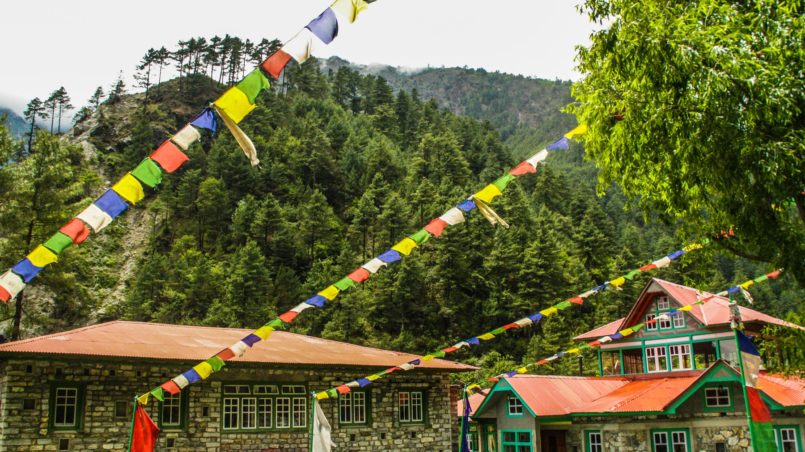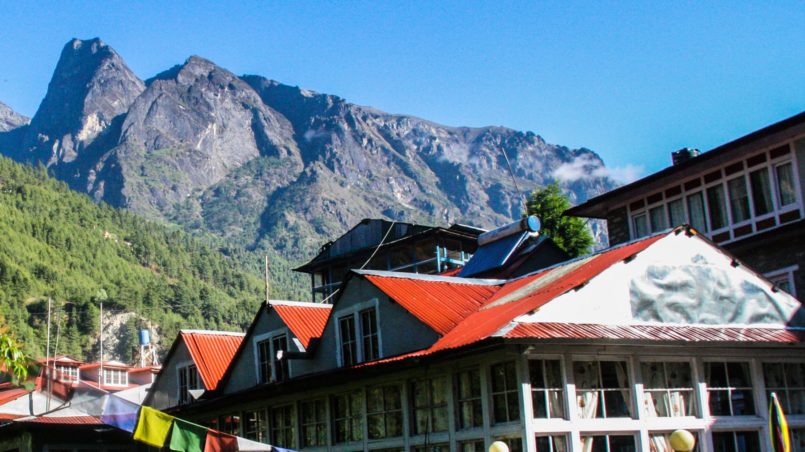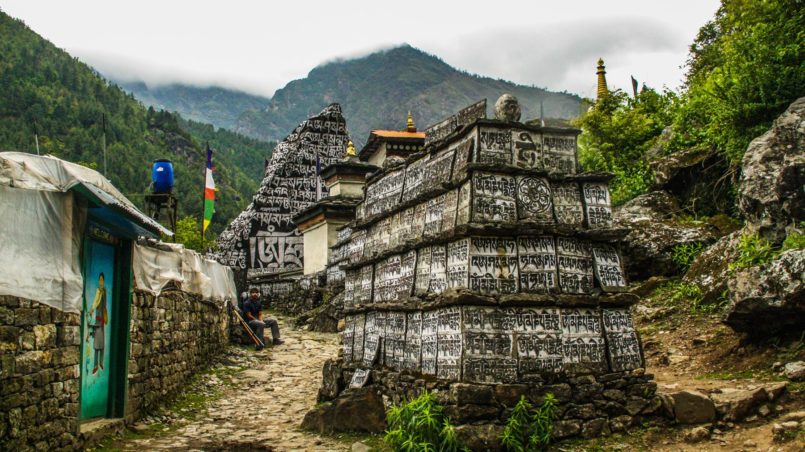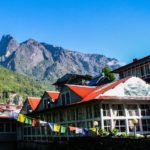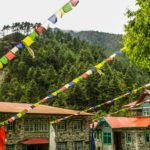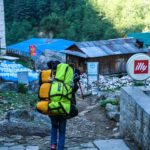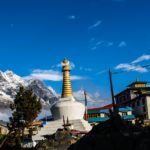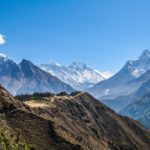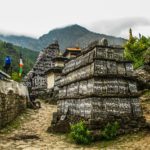The highest Mountain on Earth – Holyness or Working Place?
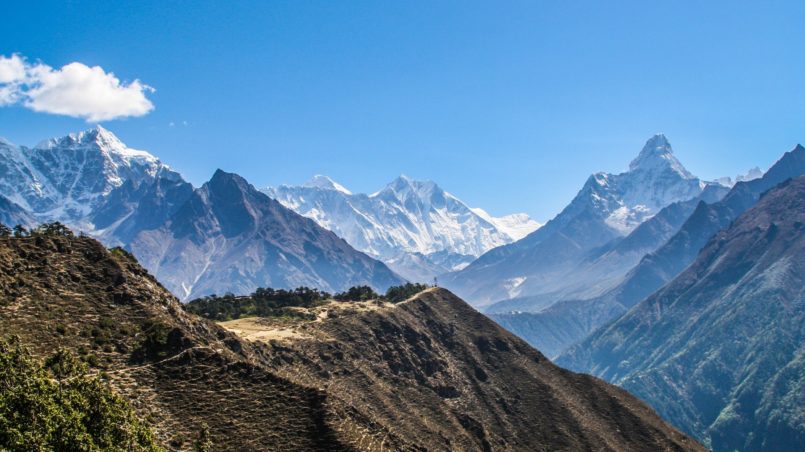
Did you ever meet someone in person who touched the highest point, that this beautiful planet earth gave us? I did not – until today:
I met one young man from Belgium who summited the Everest as it was his long life dream. He tried twice in previous years, but did not succeed. Many people need more than just one attempt to reach their aim, mostly due to health and weather conditions. You also need that tiny bit of luck, offering you a clear sky on summit day, in order to succeed.
Just two days later I meet the second person who has summit, this time a Sherpa from Nepal who, on the contrary, does not summit out of pleasure, but because it is his job to do so.
Sherpa are a hill tribe found throughout the Himalayan region – in northern Nepal. Since more than 500 years they are part of one of the many different ethnic groups (there is an estimated number of 25 different ethnicities throughout Nepal) found in Nepal – each one of them has its own language, culture and cast system. Sherpa are originally from Mongolia, and later Tibet; they follow different professions, but a vast majority follows the profession of trekking guide (high altitude guide). Most of the guides who summit the Everest are from the hill tribe of the Sherpa, but nowadays there are other hill tribes working in that business, too.
Sherpa have to overcome many difficulties, one of them is being in very thin air, over long periods of time. They say, as it is their land and they have been living there forever, they are more used to the environment and have an advantage to customize to the thin air in comparison with other people– which is true- but even they can suffer from severe headaches, especially younger man. Most of them never took any medicine against high altitude headache or any other symptom related to thin area.
Porters and Guides have to go through a medical checkup and if they suffered or suffer from any kind of illness, they are not allowed to work in this business – for many this means loosing a lot of money, which they and their families are dependent on. Also, if a Sherpa suffers an injury or looses his fingers, e.g. due to frostbites (which is very common), this can affect his whole family as well and lead to big problems as he can’t provide for them anymore. Unfortunately the life of a Sherpa is very difficult in many different ways.
Here is what I found out after having a long talk with Sherpa Kasang, who tells me all about his first hand experiences …:
Sherpa Kasang is a 55 year old man and the proud owner of a guesthouse in Phakding – a small village along the trek towards Everest. He summit Everest not only one time, but 4 times in total. Kasang had to retire early from this job due to back problems – because of carrying heavy loads throughout many years – but mostly due to the worries of his wife; she simply never knew if her husband will return from the next expedition or not and they have two children and grandchildren after all. Working as a high altitude porter/guide, in Everest expeditions, is a very dangerous job. Many Sherpa have lost their life on Everest; only in 2014 and 2015 many were surprised by heavy avalanches and were buried under thick masses of snow.
No one knows how many bodies remain on Everest, but so far certainly more than 200 (since 1951); among those are many Sherpa. As high altitude Sherpa risk their life on a daily basis, they have a well payed salary: 6000USD for 2 months; comparing that with other jobs throughout the country, it is very good. They do this job not out of pleasure but out of love for their families. The high salary allows them to buy land and send the children to school in Kathmandu or even abroad to give them the chance for a better education.
When Kasang was 12 years old he started helping his parents with work; it is very common in Nepal that children start working at a very young age to support their family. As soon as he turned 14 years, due to money problems, he started his first job as a porter and later on as a kitchen help as well.
The average body weight of a local porter is between 55 and 62 kg; regularly they carry weight of 60 kg or more. It is a very hard job, as they carry this load all day long; this compresses their spine and brings many medical problems. Porters don’t need to go through a training course, that’s why many Sherpa start of as a porter and only later on become guides.
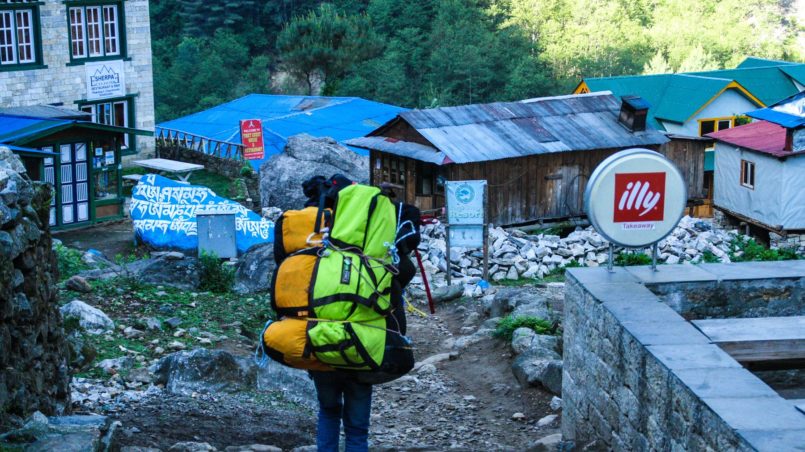
When Sherpa Kasang was 18 years old he decided to become a guide and attended the training school in Lukla; nowadays you have to go to Kathmandu to complete the training to become a guide. He mainly worked as a guide between Lukla and Everest Base Camp; but when he turned 38 years old, he completed his training for a so called „high altitude guide“ and could, therefore, work as a guide heading towards the top of Everest.
For Sherpa, climbing the Everest is not a pleasure – it’s just a job; they need the money and they are payed very well by risking their lives probably more than 100 times in that period. Every tiny mistake can end fatally.
Sherpa don’t just consider Mt. Everest as a mountain, no, for them it is something sacred – it has a religious meaning. It is like walking into the lap of the „Holy Mother (Goddess) of the Universe“, called Chomolungma (derived from the Tibetan). They respect the mountain a lot and believe that whenever it is not possible to climb it, it is because they made the goddess angry. Every time before trying to summit, local guides and porters, go to pray to the monastery of Tengboche (3,870 m). They ask for forgiveness, protection and for good luck in front of the goddess by donating mainly flowers and money.
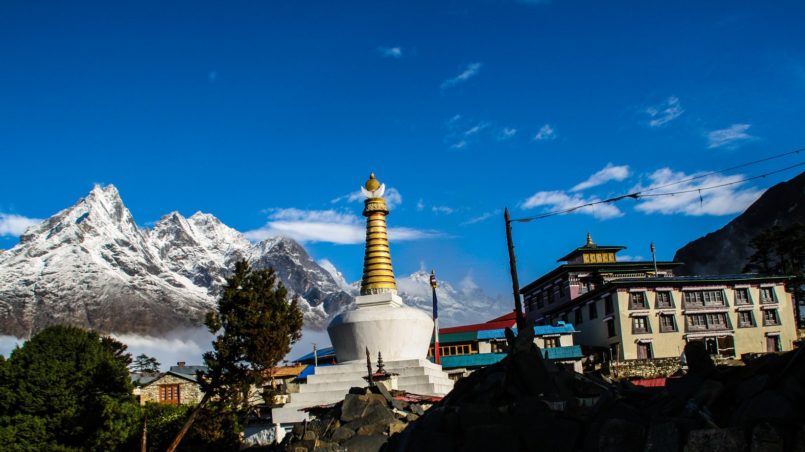
Sherpa Kasang says that since 10 years ago many things have changed: Back in the days a porter would earn 25 Nepalese Rupees = 25 Cents a day (considering the fact that 10 years ago the exchange rate was different) while carrying 35 kg on this back. Nowadays, the salary of local porters is always 12 USD a day, regardless on the weight that they are able to carry. With 12 Dollars a day they still need to eat, so at the end of the day they will remain with approx. 9 USD. Instead, tourist porters – the one who carry the mountaineers gear or simply the backpacks from one guesthouse to the next – get payed 15 USD for approx. 30kg of load. 30 kg is supposed to be the maximum amount they are allowed to carry, but unfortunately this rule is not always respected; and many times they carry about 3 times more than that amount which is leaving them in miserable conditions.
An average Everest expedition takes about 2-3 months, and the best time for climbing is from March until Mai or from September until October. From the Everest Base Camp ( 5,380 m) to the summit, there are four more Camps to overcome in between: Camp 1 (6,100 m), Camp 2 (6,500 m), Camp 3 (7,400 m) and Camp 4 (8,000 m). The mornings of the climbers usually start around 04.00 am with preparing the gear for the ascend or descend of that specific day. When you reach from EBC (Everest Base Camp) to Camp 4 you need to descend back to Camp 2 again and than ascend to Camp 3. Camp 2 is a big camp where water is still available – at higher altitudes only reheated ice will be offered. After Camp 4, people start using their oxygen; everyone carries 2 oxygen bottles and a 15 kg backbag (you have the option to pay for a porter if you are not able to carry your one bag). After arriving in Camp 3, you need to descend one more time to Base Camp 2, where you will try to ascend to the summit the following morning at 09.00 am – of course only if the weather allows you to do so or in Sherpa words:
„If the Mother Goddess allows you to do so.“
Regarding food, mountaineers burn about 6,000-10,000 calories a day (on summit day this will increase to 20,000 calories); therefore, it is highly important – even though appetite is very low at high altitudes – that they consume a high caloric diet to avoid body deterioration: This includes tea, bread, soups, rice, porridge, and special high caloric meals. Shower and clothes washing is available once a month – at Camp 2.
All this process of going from one Camp to another has to be done in order to acclimatize. The actual ascend to the summit takes around 4 hours. Kasang says that many people have died up there; but fortunately no one from his expedition. He talks about the difficulties he had to overcome while climbing and points out the most important ones: as for example the lack of oxygen and any extreme weather condition like wind (sometimes the wind has a speed of 100 km an hour, and people have to stand among their tends and secure it so that it doesn’t blow away), or the sun which enters your eyes and blindsides you and you would be in danger of falling down a steep trail.
Another major difficulty might be the fact that due to high altitude, breathing becomes gradually more difficult and symptoms like severe cough could increase more and more. This can easily break the spirit and have a psychological impact on people.
Another fact that Kasang is pointing out is the moral support throughout the trek: For example if someone feels sick and needs to descend, the person who offers help to reach the base camp puts himself in severe danger and looses the chance to summit Everest this time.
Kasang states that when one wants to climb Mt. Everest, the most important thing is the team:
The whole team is the key-point, as everyone needs to work together and rely on each other – only then everyone can reach safely. Unfortunately, very often, when someone manages to summit the Everest, the name of the Sherpa, who was there along with them, helping them and leading the way, is rarely mentioned anywhere. Some Sherpa have been to summit 5-7 times, but nobody knows about them. The exception to this is the story of those two people, who in 1951, for the first time ever, summitted the Everest: Their names are Edmund Hillary, a New Zealand guy, and Sherpa Tenzing, from Nepal. Initially, they claimed that Tenzing reached first, afterwards that Edmund Hillary was first – and finally they agreed that they arrived both at the same time.
The truth still lies with them both and will probably be this way forever.
In the past, when Kasang used to work as a guide, the price to summit was 7,000 USD, whereas nowadays the price reached a sum of 20,000-40,000 USD, depending on the trekking company and on the number of people participating on the expedition. The government takes most of the money, for making roads and treks safer, the other part goes to the Sherpa. Back in the days, Kasang was payed 5 USD a day for working as a high altitude Sherpa (a porter would only get 1.5 USD a day – please consider again that the exchange rate was different at that time); nowadays the amount is 105 USD a day.
Kasang is very happy and feels honored to share his life story with me. I truly thank him for this very interesting information and for his courageous heart. Along our conversation, he proudly shows me pictures of himself when he was young and was trekking towards the Everest, as well as pictures of his children and grandchildren. Today he works in the guesthouse alongside with his wife – to whom he has been happily married since 25 years. He tells me that he was also a Buddhist student in Tengboche monastery and that he achieved the title of Lama, which means teacher in Tibetan Buddhism.
After speaking to Kasang, I started thinking and asking myself a lot of questions; some people say that nowadays everyone, who can afford it – who has the necessary 20,000-40,000 USD – can summit the Everest; you can basically hire someone to push you up the mountain.
I would like to ask you:
- What do you think about it? Do you think it is possible for everyone to climb the Everest?
- What do you think about the major contrast between climbing Mt. Everest out of pleasure or, on the other hand, out of duty?
- How would you feel about it if you do something “forbidden” in the eyes of your religion in order to take good care of your family? Would you take the job or rather choose a different profession wherein you earn way less money but don’t feel guilty ?
I would be very happy to know your opinions …
Namaste

